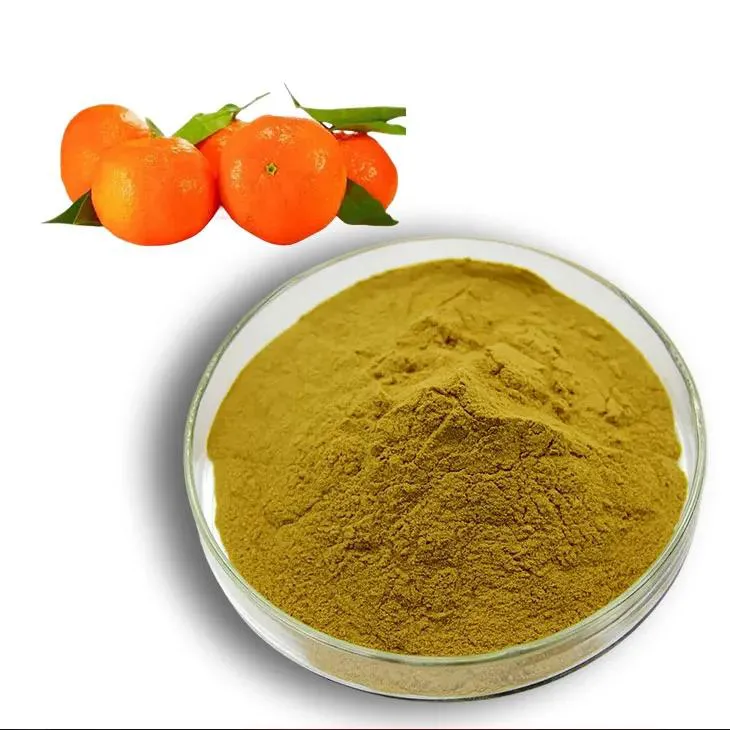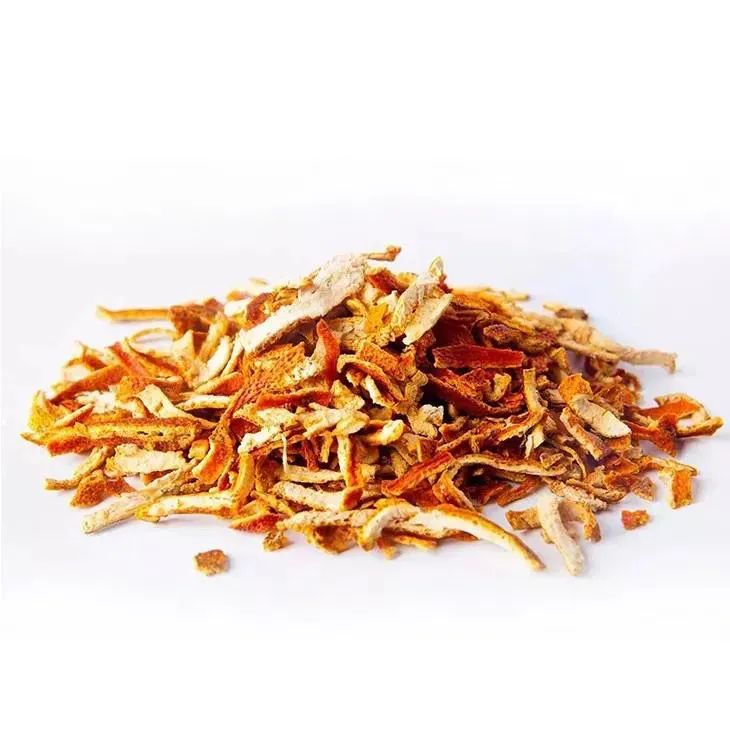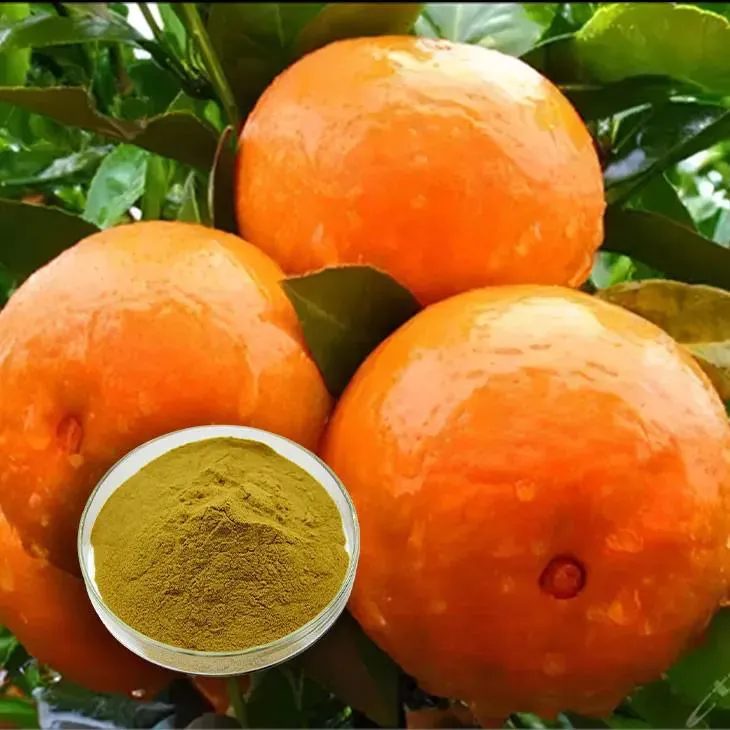- 0086-571-85302990
- sales@greenskybio.com
How to Extract Citrus Bioflavonoids from Plants.
2024-11-29

1. Introduction to Citrus bioflavonoids
Citrus bioflavonoids are a group of compounds that are widely present in citrus plants such as oranges, lemons, and grapefruits. These bioflavonoids play significant roles in plants. They are involved in various physiological processes, including protecting plants from environmental stresses such as UV radiation, pests, and diseases.
Bioflavonoids also contribute to the color and flavor of citrus fruits, which are important for attracting animals for seed dispersal. These compounds are not only important for plants but also have great potential in human - related applications in health, cosmetics, and food industries.

2. Significance of Citrus bioflavonoids in Health
Citrus bioflavonoids have been associated with numerous health benefits. For example, they have antioxidant properties. Antioxidants are crucial for neutralizing free radicals in the body, which are unstable molecules that can cause damage to cells and contribute to the development of various diseases such as cancer, heart disease, and neurodegenerative disorders.
Some citrus bioflavonoids, like Hesperidin, have been shown to have anti - inflammatory effects. Inflammation is a natural immune response, but chronic inflammation can lead to problems. Citrus bioflavonoids can help regulate the body's inflammatory response, potentially reducing the risk of inflammatory - related diseases.
Moreover, they may also play a role in improving cardiovascular health. They can help in reducing blood pressure, improving blood lipid profiles, and preventing platelet aggregation, which is important for reducing the risk of heart attacks and strokes.

3. Applications of Citrus Bioflavonoids in Cosmetics
In the cosmetics industry, citrus bioflavonoids are also highly valued. They can be used for skin health. Their antioxidant properties make them useful in anti - aging products. Free radicals are one of the main causes of skin aging, leading to wrinkles, loss of elasticity, and dull skin. By neutralizing free radicals, citrus bioflavonoids can help keep the skin looking youthful and healthy.
They can also be used in products for treating skin conditions. For instance, some bioflavonoids have anti - inflammatory properties that can be beneficial for treating skin inflammations such as acne, eczema, and psoriasis.
Citrus bioflavonoids can also be added to hair care products. They may help in strengthening the hair follicles, improving hair growth, and adding shine to the hair.

4. Uses of Citrus Bioflavonoids in the Food Industry
The food industry is another area where citrus bioflavonoids find applications. They can be used as natural food additives. As natural antioxidants, they can be added to food products to extend their shelf - life by preventing oxidative rancidity in fats and oils. This is especially important for processed foods that contain oils, such as fried foods and some baked goods.
They can also be used to enhance the flavor of food products. Citrus bioflavonoids can add a pleasant citrusy flavor to foods, which can be used in creating new flavors in the food industry, for example, in the development of new beverages, candies, or desserts.
Furthermore, due to their potential health benefits, there is an increasing trend to add citrus bioflavonoids to functional foods. Functional foods are those that not only provide basic nutrition but also offer additional health benefits. For example, adding citrus bioflavonoids to breakfast cereals or yogurts can make these products more appealing to health - conscious consumers.
5. Solvent Extraction Method
One of the most common methods for extracting citrus bioflavonoids from plants is solvent extraction.
5.1. Selection of Solvents
- The choice of solvent is crucial in solvent extraction. Common solvents used include ethanol, methanol, and acetone. Ethanol is often preferred as it is relatively safe, readily available, and can effectively extract bioflavonoids.
- However, the polarity of the solvent needs to be considered. Bioflavonoids have different solubilities depending on their chemical structures. Some are more soluble in polar solvents, while others may require less polar solvents. For example, flavonoid glycosides are generally more soluble in polar solvents like ethanol - water mixtures.
5.2. Preparation of Plant Material
- First, the citrus plant material (such as peels, leaves, or fruits) needs to be collected. It is important to ensure that the plant material is fresh and free from contaminants.
- The plant material is then washed thoroughly to remove dirt, pesticides, and other impurities. After washing, it is dried. Drying can be done in the sun or using a drying oven at a suitable temperature. Proper drying is essential as it can affect the extraction efficiency later. Over - drying may lead to the degradation of bioflavonoids, while under - drying may leave too much moisture in the material, which can interfere with the extraction process.
- Once dried, the plant material may need to be ground into a fine powder. Grinding increases the surface area of the plant material, which can enhance the contact between the solvent and the bioflavonoids during extraction.
5.3. Extraction Process
- The powdered plant material is placed in a suitable extraction vessel. A known volume of the selected solvent is then added to the vessel. The ratio of plant material to solvent is an important parameter that can affect the extraction yield. A common ratio might be 1:10 (plant material: solvent) by weight, but this can vary depending on the type of plant material and the specific bioflavonoids being extracted.
- The extraction vessel is then sealed and placed in a shaking or stirring device. This helps in ensuring thorough mixing of the plant material and the solvent, which is necessary for efficient extraction. The extraction is usually carried out at a certain temperature and for a specific period of time.
- For example, the extraction may be carried out at room temperature for 24 - 48 hours with continuous shaking. However, in some cases, a higher temperature may be used to increase the extraction rate, but care must be taken not to degrade the bioflavonoids due to excessive heat.
5.4. Separation and Purification
- After the extraction period, the mixture of solvent and extracted bioflavonoids (the extract) needs to be separated from the remaining plant material. This can be done by filtration. Filter paper or a filtration device can be used to separate the solid plant material from the liquid extract.
- The obtained extract may still contain impurities such as pigments, sugars, and other compounds. To purify the bioflavonoids, further separation techniques may be required. One common method is chromatography. For example, column chromatography can be used to separate different bioflavonoids based on their different affinities for the stationary and mobile phases in the column.
- Another method for purification is solvent - solvent extraction. This involves using two immiscible solvents to separate the bioflavonoids from other impurities based on their different solubilities in the two solvents.
6. Other Extraction Methods
- Supercritical fluid extraction is another method that can be used to extract citrus bioflavonoids. Supercritical fluids, such as supercritical carbon dioxide (sc - CO₂), have properties between those of a gas and a liquid. They can penetrate plant material effectively and have a high selectivity for bioflavonoids.
- Ultrasonic - assisted extraction is also gaining popularity. Ultrasonic waves can create cavitation bubbles in the solvent, which can enhance the mass transfer between the plant material and the solvent, thus increasing the extraction efficiency.
- Enzyme - assisted extraction is yet another approach. Enzymes can be used to break down the cell walls of the plant material, making it easier for the solvent to access the bioflavonoids inside the cells.
7. Conclusion
Citrus bioflavonoids are valuable compounds with significant potential in health, cosmetics, and food industries. Extracting these bioflavonoids from plants is an important process. Solvent extraction is a well - established method, but other methods such as supercritical fluid extraction, ultrasonic - assisted extraction, and enzyme - assisted extraction also show promise. As research continues, more efficient and sustainable extraction methods may be developed, further unlocking the potential of citrus bioflavonoids in various applications.
FAQ:
What are citrus bioflavonoids?
Citrus bioflavonoids are a group of plant - derived compounds found in citrus fruits such as oranges, lemons, and grapefruits. They are secondary metabolites that play important roles in plants, including protection against environmental stressors, and they also have various potential benefits for human health.
Why are citrus bioflavonoids important?
Citrus bioflavonoids are important for several reasons. In plants, they help in defense mechanisms against pathogens and pests. For human health, they may have antioxidant, anti - inflammatory, and anti - microbial properties. They also have potential applications in the food, cosmetics, and pharmaceutical industries due to these beneficial properties.
What are the common methods for extracting citrus bioflavonoids from plants?
One common method is solvent extraction. This involves using solvents like ethanol or methanol to dissolve the bioflavonoids from the plant material. Other methods may include supercritical fluid extraction, which uses supercritical carbon dioxide as a solvent - like medium under specific pressure and temperature conditions. Microwave - assisted extraction is also sometimes used, which speeds up the extraction process by using microwave energy.
What factors can affect the extraction of citrus bioflavonoids?
Several factors can influence the extraction. The type of solvent used is crucial as different solvents may have different solubilities for bioflavonoids. The particle size of the plant material can also affect the extraction efficiency, with smaller particles generally providing more surface area for extraction. Temperature and extraction time are also important factors; higher temperatures may increase the extraction rate up to a certain point, but may also degrade the bioflavonoids if too high, and longer extraction times may not always result in higher yields.
What are the potential applications of citrus bioflavonoids in the health industry?
In the health industry, citrus bioflavonoids may be used in dietary supplements. Their antioxidant properties may help in reducing oxidative stress in the body, which is associated with various chronic diseases. They may also have potential in improving cardiovascular health by reducing inflammation and blood lipid levels. Some studies suggest that they could play a role in cancer prevention, although more research is needed.
Related literature
- Extraction and Characterization of Bioflavonoids from Citrus Fruits"
- "Citrus Bioflavonoids: Properties, Extraction, and Health Benefits"
- "Advances in the Extraction of Bioflavonoids from Citrus Plants for Industrial Applications"
- ▶ Hesperidin
- ▶ citrus bioflavonoids
- ▶ plant extract
- ▶ lycopene
- ▶ Diosmin
- ▶ Grape seed extract
- ▶ Sea buckthorn Juice Powder
- ▶ Beetroot powder
- ▶ Hops Extract
- ▶ Artichoke Extract
- ▶ Reishi mushroom extract
- ▶ Astaxanthin
- ▶ Green Tea Extract
- ▶ Curcumin Extract
- ▶ Horse Chestnut Extract
- ▶ Other Problems
- ▶ Boswellia Serrata Extract
- ▶ Resveratrol Extract
- ▶ Marigold Extract
- ▶ Grape Leaf Extract
- ▶ blog3
- ▶ Aminolevulinic acid
- ▶ Cranberry Extract
-
The best lemon juice powder in nature.
2024-11-29
-
Organic Vitamin K2 Powder Suppliers
2024-11-29
-
Bulk purchase of L - tyrosine.
2024-11-29
-
Vitamin K2 Manufacturers
2024-11-29
-
Polygonum multiflorum extract
2024-11-29
-
Black Garlic Extract
2024-11-29
-
Mulberry Extract
2024-11-29
-
Almond Extract Powder
2024-11-29
-
Avocado Extract Powder
2024-11-29
-
Curcuma Longa Extract/Turmeric extract
2024-11-29
-
Rose Hip Extract
2024-11-29
-
Hericium erinaceus extract powder
2024-11-29
-
Yellow Pine Extract
2024-11-29
-
Fig Extract
2024-11-29























